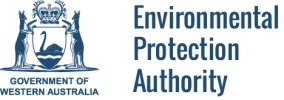The Environmental Protection Authority has released advice and recommendations to the Minister for Environment on two proposals from Oakajee Port and Rail Pty Ltd. (OPR).
The first (EPA Report 1387) is to construct and operate iron ore handling and storage facilities and ancillary infrastructure required to develop and operate a 45 million tonne per annum iron ore export facility at Oakajee, 24km north of Geraldton. The Oakajee Deepwater Port was approved under the Environmental Protection Act 1986 in February 1998.
The second (EPA Report 1388) is to construct and operate a 570 kilometre railway and associated rail infrastructure from the North West Coastal Highway at Oakajee to the Jack Hills mining operations located 500 kilometres to the north east.
EPA Chairman Paul Vogel said the proposals can be managed to meet the EPA’s objectives provided that the recommended conditions are implemented.
“For the Terrestrial Port the loss of native vegetation and fauna habitat will be offset by the purchase of land parcels for conservation and funding of research projects into threatened fauna,” Dr Vogel said.
‘Based on OPR’s modelling, and the high energy marine environment at Oakajee, discharges from the Oakajee desalination plant are unlikely to have a significant impact on water quality.
‘Modelling undertaken so far for dust emissions show that the likelihood of impacts outside the established Oakajee Industrial Estate is low and can be regulated through the licensing provisions of the Environmental Protection Act with best practice management measures required to be adopted before approval to operate is granted.
“The final rail alignment and associated infrastructure will be located within a Rail corridor delineated by specified co-ordinates with each section of the final alignment to include maps of locations of key conservation assets to be submitted prior to construction to demonstrate that impacts are no greater than those committed to by OPR.
‘The construction and operation of the railway must ensure that surface water diversion, erosion and sedimentation do not cause the loss of, or adverse impacts to, significant vegetation beyond 50 metres either side of the railway centreline.
‘Apart from two constrained areas there is to be no ground disturbance within 50 metres of Western Spiny-tailed Skink habitat or Malleefowl mounds with all construction areas to be inspected prior to disturbance.’
‘There is also to be a Plan formulated to protect the conservation values of the proposed Woolgorong, Twin Peaks and Narloo Conservation Parks from the ongoing impacts of the proposal.
‘Offsets have also been agreed for impacts on Carnaby’s Cockatoo, Malleefowl and Western Spiny-tailed Skink’s habitats, poorly represented native vegetation in the agricultural area and native vegetation in proposed conservation reserves.
‘This approach will provide long term environmental benefits through the protection and management of high quality remnant native vegetation in the region.
‘The operation of the rail is not to exceed specific noise criteria at nearby dwellings.
‘Both of these proposals demonstrated the value of impact assessment: high quality environmental information from the proponent and a shared understanding of project and assessment timeframes.’
EPA Reports 1387 and 1388 are available at www.epa.wa.gov.au. EPA Report 1386 on Fortescue Metals Group Limited’s Solomon Project has also been released. There is a two week public appeal period on the reports’ contents closing 28 March, 2011.
EPA Media contact: Charlie Maling, 6467 5415, 0400 866 450
